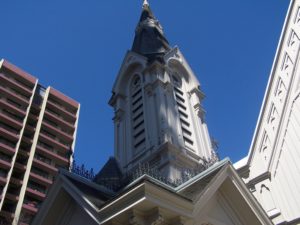 When you think of Portland, religion may not be the first thing that springs to mind, but like most cities, a lot of Portland’s most interesting historical buildings are churches. I’ve been trying to capture as many as possible while walking around the city. In this post, we visit several churches in the southwest corner of downtown, generally in the area from the South Park Blocks to the Stadium Freeway (I-405). Almost all of the churches are over a hundred years old, and they display a wide variety of architectural styles and building materials.
When you think of Portland, religion may not be the first thing that springs to mind, but like most cities, a lot of Portland’s most interesting historical buildings are churches. I’ve been trying to capture as many as possible while walking around the city. In this post, we visit several churches in the southwest corner of downtown, generally in the area from the South Park Blocks to the Stadium Freeway (I-405). Almost all of the churches are over a hundred years old, and they display a wide variety of architectural styles and building materials.
Portland Korean Church (orig. First German Evangelical Church)
933 SW Clay St.
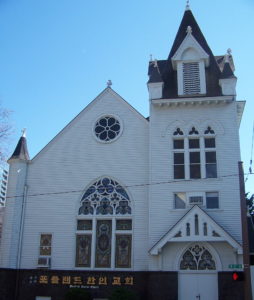 This church was originally built in 1905 as the First German Evangelical Church, and was, until recently, home to the Portland Korean Church. As of last week, the building is for sale. If you’ve ever wanted to own a historic church, this is your chance – it’s zoned for residential, retail or service-oriented businesses, too. With the original stained glass windows imported from Germany, it is a beautiful building…hopefully, it won’t be torn down by a heartless developer.
This church was originally built in 1905 as the First German Evangelical Church, and was, until recently, home to the Portland Korean Church. As of last week, the building is for sale. If you’ve ever wanted to own a historic church, this is your chance – it’s zoned for residential, retail or service-oriented businesses, too. With the original stained glass windows imported from Germany, it is a beautiful building…hopefully, it won’t be torn down by a heartless developer.
The Old Church
1422 SW 11th Ave.
The Old Church website
While not the original name, obviously, it is fitting, as the cornerstone was laid in 1882. While originally critiqued for being “too far out in the woods”, it now occupies prime real estate downtown. It was originally built as the Calvary Presbyterian Church and served that congregation for 66 years before changing hands for the first time. As with almost every historic building, it came dangerously close to being demolished, until saved by Lannie Hurst in the 1960s.
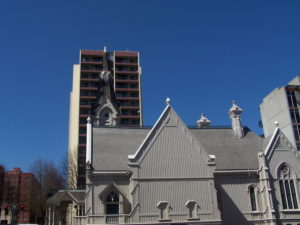 The building is an amazing example of Carpenter Gothic architecture, and somewhat rare among historic churches in that it is constructed of wood. It seems as if every square inch of the exterior has some sort of detail work to be found. It also features classic stained glass windows and, on the interior, Victorian furniture. In addition to the fine woodwork, the exterior also features cast-iron columns and Baroque detailing around the windows.
The building is an amazing example of Carpenter Gothic architecture, and somewhat rare among historic churches in that it is constructed of wood. It seems as if every square inch of the exterior has some sort of detail work to be found. It also features classic stained glass windows and, on the interior, Victorian furniture. In addition to the fine woodwork, the exterior also features cast-iron columns and Baroque detailing around the windows.
According to their website, the church is also home to an original Hook and Hastings pipe organ, which was built in Boston, shipped around South America to San Francisco, and then brought to Portland by ox cart. Considering the journey, it is not surprising that it is the only Hook and Hastings pipe organ in the city.
Grace Bible Church
1421 SW 12th Ave.
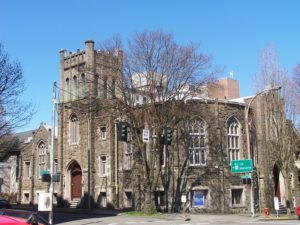 This is one of several old churches in Portland that have a distinct fortress-like feel to them. If I saw this building stripped of any obvious signage, I would probably guess “armory” before I would guess “church”. That said, it is certainly a unique building.
This is one of several old churches in Portland that have a distinct fortress-like feel to them. If I saw this building stripped of any obvious signage, I would probably guess “armory” before I would guess “church”. That said, it is certainly a unique building.
Even though it is on the National Register of Historic Places, it has been difficult to find a lot of information about the building on the internet. Except for this image page from the University of Oregon digital archives, there doesn’t seem to be much out there. Following this thread, I learned that the architect was Willard Franklin Tobey, who also designed the Cornelius Hotel in Portland and the First Congregational Church in Oregon City, which bears a striking resemblance to the Grace Bible Church (although it appears to be a wooden structure).
It is a shame I couldn’t find more, because I suspect there are some interesting stories to be found. Take, for instance, the lone owl perched high on the stone tower. It is replicated on the porch of an attached residence (not pictured, unfortunately), which makes me even more curious as to it’s meaning. I’d also like to know more about why both Tobey’s churches look more like squat fortresses than soaring cathedrals. I wonder if he had some bad religious experiences growing up.
First Unitarian Church (Eliot Chapel)
1011 SW 12th Ave.
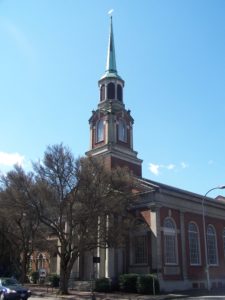 Built in 1924, the First Unitarian Church is one of the younger churches on our list, but it still landed a spot on the National Register of Historic Places. Interestingly, the building has recently undergone a $1 million seismic retrofit, so it is likely to last longer than most historic buildings in downtown Portland. Now known as the Eliot Chapel, the building hosts weddings, receptions and other events.
Built in 1924, the First Unitarian Church is one of the younger churches on our list, but it still landed a spot on the National Register of Historic Places. Interestingly, the building has recently undergone a $1 million seismic retrofit, so it is likely to last longer than most historic buildings in downtown Portland. Now known as the Eliot Chapel, the building hosts weddings, receptions and other events.
This building has a more traditional feel, with the brick construction and classic steeple. It looks as though it would be at home in a small New England town. That said, it is an excellent example of the type and a beautiful building to photograph. It is also one of the few churches which still serves the original congregation who built it.
First Baptist Church
909 SW 11th. Ave.
First Baptist Church website
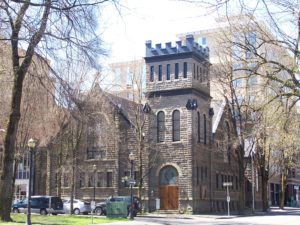 One of the more imposing churches in downtown, the First Baptist Church is another of the fortress-like churches in the area. Rising straight up from the sidewalk, the relatively tall masonry walls feel much larger than they really are. According to the church’s website, the building was designed by Warren Hayes and modeled after Trinity Church in Boston, in the Romanesque Revival style (as opposed to the Gothic style in vogue around Portland at the time). The light-colored sandstone (quarried in Washington) also gives the building a unique style, and resulted in the building being called the “white temple” for many years.
One of the more imposing churches in downtown, the First Baptist Church is another of the fortress-like churches in the area. Rising straight up from the sidewalk, the relatively tall masonry walls feel much larger than they really are. According to the church’s website, the building was designed by Warren Hayes and modeled after Trinity Church in Boston, in the Romanesque Revival style (as opposed to the Gothic style in vogue around Portland at the time). The light-colored sandstone (quarried in Washington) also gives the building a unique style, and resulted in the building being called the “white temple” for many years.
First Congregational Church
1126 SW Park Ave.
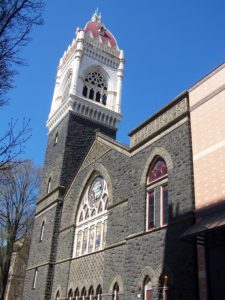 Arguably the most recognizable of the churches in this area, the First Congregational Church has a prime location on the South Park Blocks, as well as a unique 175-foot cream and red bell tower that can be seen from various spots around town (such as Washington Park’s famous view). Sadly, the two 100-foot towers that flanked the central tower were removed in a modernization in the 1940s, but photos of the original configuration can be found online. The church was built in 1891, and like the First Baptist Church above, was modeled on a church in Boston, the Old South Church. The building also contains some very impressive stained glass made in Portland.
Arguably the most recognizable of the churches in this area, the First Congregational Church has a prime location on the South Park Blocks, as well as a unique 175-foot cream and red bell tower that can be seen from various spots around town (such as Washington Park’s famous view). Sadly, the two 100-foot towers that flanked the central tower were removed in a modernization in the 1940s, but photos of the original configuration can be found online. The church was built in 1891, and like the First Baptist Church above, was modeled on a church in Boston, the Old South Church. The building also contains some very impressive stained glass made in Portland.
The building was designed by the Swiss architect Henry Hefty, in the Italian (or Venetian) Gothic style. Interestingly, although the building was built in 1895, this was the congregation’s third building. It was selected for the National Register of Historic Places in 1976.
St. James Lutheran Church
1315 SW Park Ave.
Yet another fortress-like church, St. James Lutheran was built in 1890, and of course, is on the National Register of Historic Places. Like the First Congregational Church above, St. James Lutheran is built facing the South Park Blocks, though it does not enjoy the recognizability of it’s semi-neighbor (probably because it lacks a 175-foot bell tower).
It does, however, have an amazing wooden door, where the planks fill the entire stone entrance way and the doorway itself is then cut from those planks. I’m sure there is a better way to describe that, but the linked picture does a great job of showing it off.
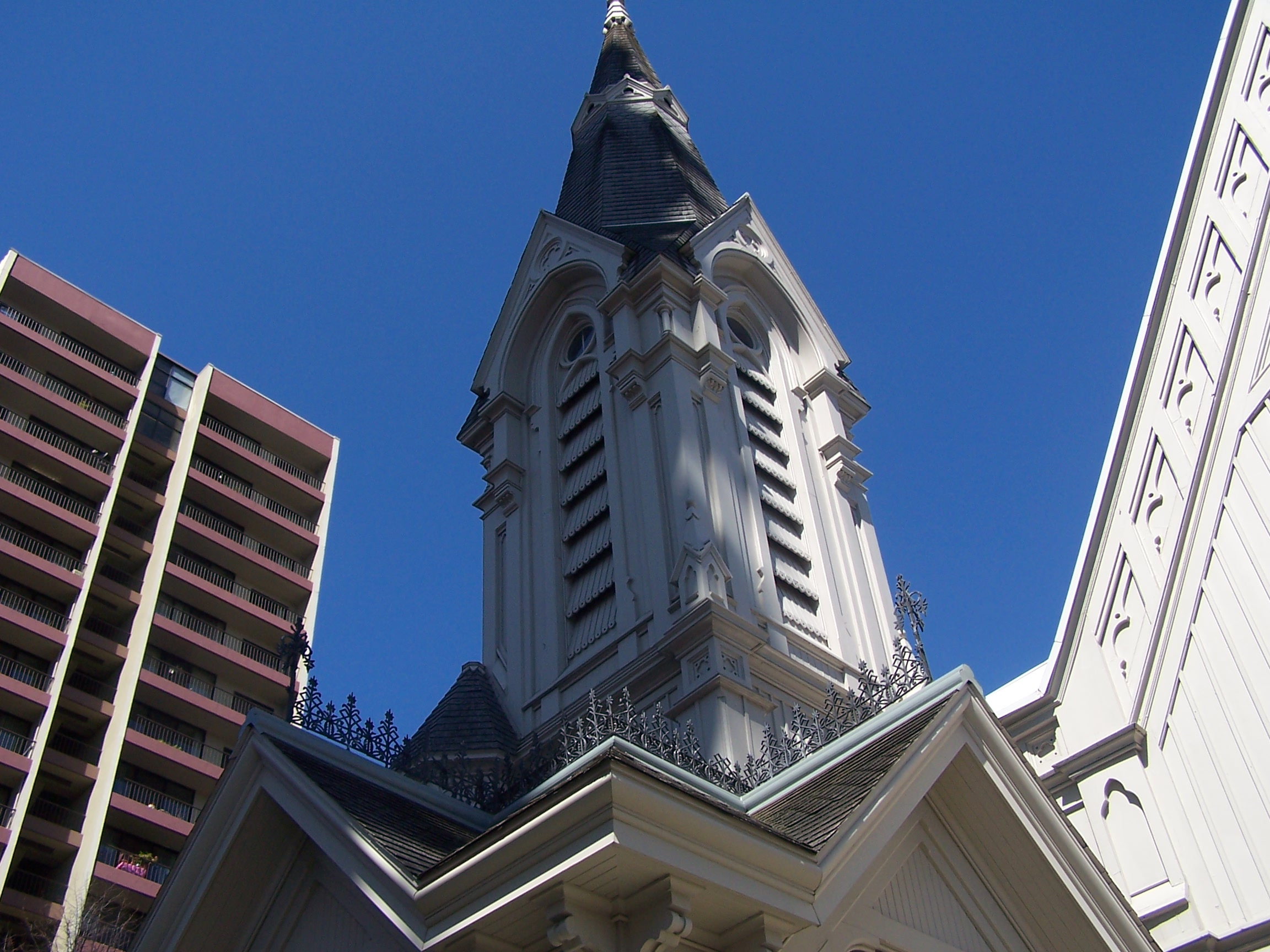
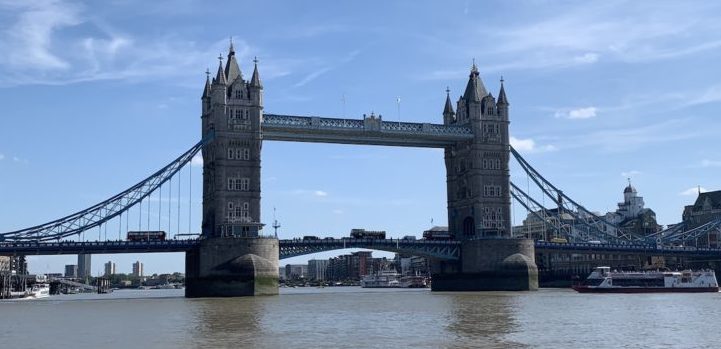
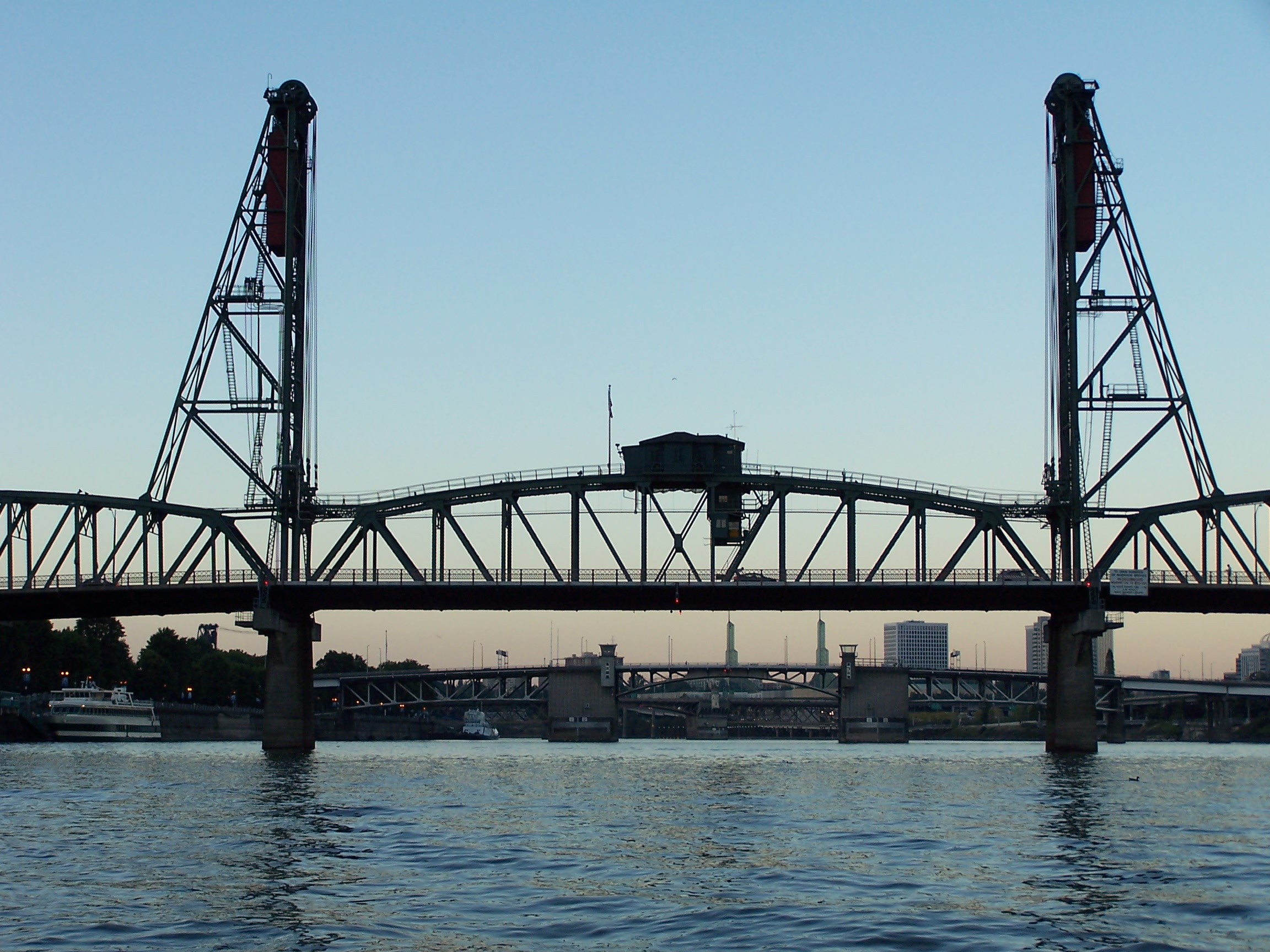
Not to be picky, but the photo you have for First Baptist Church is actually that of St. James Lutheran Church on SW Park and Jefferson.